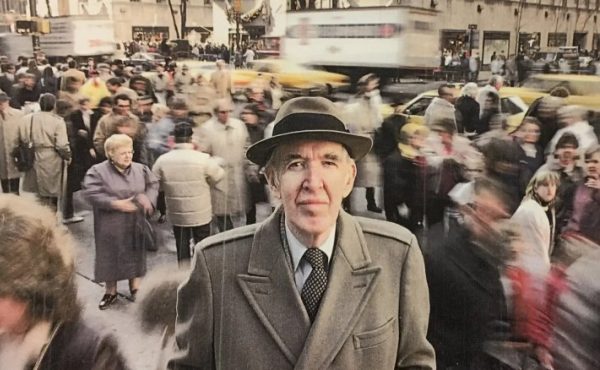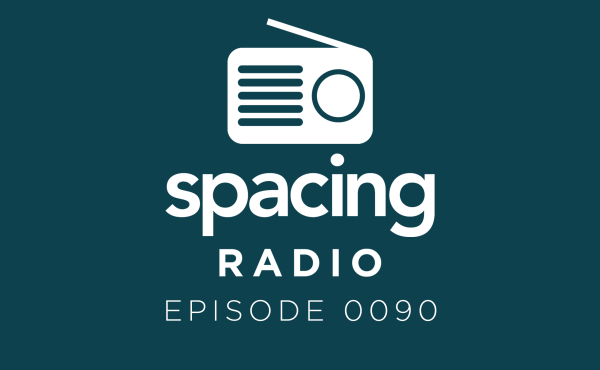
Earlier this afternoon, Steve Munro posted a long and scathing commentary on a study by the Residential and Civil Construction Alliance of Ontario. The author of the report is Dr. Richard Soberman, a well-recognized name in transit consulting. Soberman is the same consultant who oversaw the construction of the Scarborough RT, and the 2006 study to replace the same line (favouring an upgrade with new equipment and an extension to Sheppard and Markham Road over LRT or a Danforth Subway extension). In this new report, Soberman pushes the Province to pass legislation to ensure the various projects funded by MoveOntario 2020 are funded, and then proceeds to slam many of the projects it funds.
I will leave most of the commentary on the report to Munro, but one aspect that interested me were the online tours of three of the future LRT routes (Eglinton, Sheppard, and Hurontario/Main) to be built under Transit City or other provincial funding.
Eglinton seems to have a curse when it has come to transit proposals. The TTC once planned a frequent trolley bus route along Eglinton from Yonge to Weston Road, but it fell through as Forest Hill residents objected to overhead wires in their neighbourhood. In the 1990s, construction started on a short first phase of an Eglinton Subway, only to have the hole filled in after newly elected Mike Harris pulled the plug. Perhaps with Transit City, Eglinton will be third time lucky with the underground LRT planned for that corridor. (The Eglinton-Crosstown line is the Transit City Line I am most excited about.) The photo tour starts at Morningside and goes all the way to Dixie Road in Mississauga, passing though suburban, urban and industrial landscapes along the way.
The Sheppard Subway was supposed to go to Victoria Park Avenue in its first stage, but was cut back at the same time the Harris government cancelled the Eglinton Line. The Sheppard East Transit City line is the part of the otherwise great plan I am least excited about as it could result in a disjointed, multiple-transfer ride across the top of the city (some cynics on the Urban Toronto Forum have named it “Transfer City”). The Sheppard Subway, expensive and derided as “the Stubway,” has proved some worth with intensified development along the route and healthier ridership levels.
Soberman’s solution to the problem of multiple modes along the Sheppard corridor is to convert the subway to LRT, and have the Sheppard route surface past Sheppard-Yonge and Don Mills for a single LRT line between Downsview Station and Malvern. While an interesting idea, it would disrupt transit on the corridor for at least a year, never mind the political fallout of replacing an expensive subway with light rail vehicles. And on Eglinton, Soberman advocates a change to BRT at Keele/Weston, so his positions aren’t all that consistent.
Anyway, the tour is interesting, as Sheppard passes from the low-density Sheppard/Morningside area to the canyon-like rows of slab apartment towers in Agincourt, through the subway corridor and on to Downsview.
Along with Yonge Street through York Region, the Hurontario Corridor between Port Credit and Brampton is one 0f the most interesting corridors in the 905. The big MoveOntario 2020 funding announcement that promised 66% provincial funding for projects like Transit City also provided funds for a similar LRT corridor linking Downtown Brampton and Port Credit.
Port Credit is one of the 905’s most urbanized and charming former towns, Mississauga City Centre is a bold, yet flawed, attempt at a new downtown, with Square One, office campuses and condo high-rises. After the long stretch of industrial low rises and office parks, Hurontario enters Brampton and becomes Main Street at Steeles Avenue, following the Etobicoke Creek ravine and entering a historic, slowly revitalizing downtown core. It’s a great cross-section of maturing suburbia. As a bonus, Soberman adds a short section of Brampton’s Queen Street East to Kennedy Road, past the now-closed hospital and two new high-rise condo sites in what is right now, a old, ugly and underutilized suburban arterial.
Despite Soberman’s claims, the Hurontario/Main corridor is well suited to LRT. It happens to hit three different GO Train lines, and the Mississauga Route 19 to Shoppers World is the busiest in that system, running every few minutes in rush hours, and on weekends, packed articulated buses ply the route regularly. More urban development in Brampton and Mississauga, along with bus-based transit improvements in both cities, will feed this transit spine for Peel Region. Soberman, in stating that bus rapid transit is enough, despite funding and current planning for LRT, is seemingly undermining his call for legislated funding for MoveOntario 2020.




17 comments
Don’t get me wrong – legislation to fund 2020 would be welcomed.
My worry is that fighting over which mode of transit it will be (BRT vs LRT vs Subway vs Swan Boat) will result in nothing be built. We cannot let that bickering derail the project – pardon the pun.
I think plans are firmly in place and there is very little debate whether Toronto should have streetcars/LRTs over buses. The routes propsed in Toronto have been proven to have reached their capacity and need a new mode of transport.
The idea that Toronto should use buses in low density areas is so short sighted. The goal of placing LRT in these areas is to stimulate denser development. Its to provide permanent transit infrastructure.
His other observations about the York subway being politically motivated didn’t need a report to prove this. Anyone with a brain saw this back when that announcement was made.
“The Sheppard Subway was supposed to go to Victoria Park Avenue in its first stage, but got cut back at the same time the Harris government cancelled the Eglinton Line.”
A small correction: Mike Harris did not cut that aspect of the Sheppard line. The Sheppard line was planned to go all the way to Victoria Park in its first phase, as part of the Network 2011 report in 1984. It was cut back to Don Mills by Bob Rae when he got shovels into the ground.
This is the comment I made on Steve Munro’s Site regarding any BRT proposal:
Reading that I was thinking that Soberman should go read up on Calgary First 25 Year LRT report. When picking a system the city came to this conclusion:
“The analysis concluded that the capital cost of a LRT and busway system would be similar but that LRT offered significant advantages over the other options in regard to speed and service reliability, reduced operating costs, impact on the downtown road system and urban environment, and ability to achieve a more compact urban form.”
Today the City does have one “BRT†Line. It runs between the Western leg of the city to the Centre North. It is not a full BRT, as it doesn’t have a reserved lane. Currently it would resemble the York Region’s VIVA Bus.
The western leg is currently being phased out, by extending the route 202 LRT to the Western side of the city. This is the city’s justification for converting it into an LRT line:
“LRT is considerably cheaper to operate when there is high passenger demand…With an average of 600 boarding passengers per revenue operating hour, the average cost per LRT passenger is only $0.27. In comparison, the average cost per bus passenger boarding is approximately $1.50, or almost six times the cost of carrying an LRT passenger.”
And since Toronto is a denser and larger city, I am sure that more lines could be supported with similar results. Although those figure do make me wonder why the single rider fare went up. Higher Oil prices?
kind of off-topic, but, what an unfortunate surname!
The stubway continues to amaze. In any other city it would have simply been a branch of the Yonge-University line, with every other train terminating at Don Mills instead of Finch. I’m surprised that only a single track connection was built – had two been constructed, the Sheppard line could simply revert back to branch operation, reducing the need to transfer and perhaps making an LRT transfer at Don Mills more palatable.
If you are going to keep it as an independent line, then yes, it should have been an LRT. But it’s not, so make the best of it and blow that sucker crosstown from east to west to give it some purpose. Elevate it if you have to, just complete the line.
Branching Sheppard makes a helluvalotta sense, uSky, at least until such time as when Sheppard runs fully crosstown, which would likely not be in our lifetimes.
A comment on the munro site raised the question of just how much benefit is the Transit City to the core? Not much direct benefit, (and I don’t see the WWLRT as being too useful btw). So maybe the benefits are more indirect, but add in the potential for less service with the new longer bigger streetcars, the core of the City isn’t getting too much of the Transit City plans apart from higher fares, the bills, and nasty tracks for cyclists to harm themselves on if they try to avoid the transick.
Branching Sheppard makes absolutely no sense because there is much more demand on the Yonge line, between Sheppard and Finch, than on the Sheppard line. Also, it would mean no station on the Sheppard line at Yonge & Sheppard, which means no service to North York Centre.
I disagree with Hamish’s comment: the benefit for the downtown streetcars is quite direct: people will be more evenly spread out acorss the system. King and Queen will get relief from the West Waterfront, the subways will benefit from the Eglinton-Crosstown LRT, while the Yonge line should see some relief with the Don Mills and Eg-CT LRTs.
Higher fares, bills and nasty tracks are NOT part of Transit City’s plan. Lumping those together with the TC plan is just a way of demeaning a project that benefits the entire city.
Simple things like signal priority and enforced transit lanes in rush hour will solve many problems if done properly and do not need a 20 year plan (or the province and fed money) to make it happen.
Andrew, the branching split need not be 50/50. It should be according to demand, i.e. every 3rd or 4th train perhaps branching to Sheppard. And why would it mean no Sheppard station?
Matthew, most of TransitCity is just more stubways, a la Sheppard, shunting passengers onto already overburdened existing subway. It will swamp the Yonge and Bloor lines rather than relieve them. What we need are more lines which would carry people on longer trips for the most part, while complementing the existing network. Basically, any new lines need to intersect (i.e. cross) existing lines, not just plug into them on one side. Eglinton is the only one that would do that.
… unless they finished the darn Sheppard stubway by extending it east and west to connect up with other lines and shunt traffic off of the Yonge line, of course. But, well, that’s not part of Transfer City. (Said sourly.)
Transit City basically exists north of Bloor and dumps everybody onto either the Bloor or Yonge lines. I don’t see any way that this helps downtown transit, in fact, it probably hinders it further.
The long term plan is to extend them south of Bloor into downtown (according to Steve Munro). I suppose you have to start somewhere.
The key words being – long term, i.e. between the 12th of Never and infinity.
Yes, Andrae, but if the starting point included extended the stubway west to the University-Spadina line, then you’d be moving ridership over to that arm instead of further overloading the Yonge line.
Which would make it no longer a “stubway”, Dis, as it would cross Yonge, instead of deadheading there, and carry on to the U-S part of the Y-U-S line.
But don’t hold your breath.